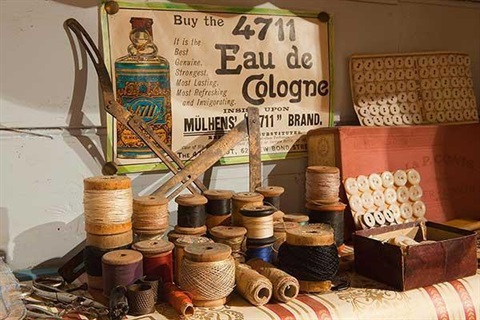Federation Street Interpretation

Life in the big cities of Sydney and Melbourne in 1900 was as sophisticated as it was anywhere in the world. Melbourne in the late 1880s was one of the richest cities on earth but the boom was followed in 1891 by a terrible economic depression.
The small town of Burnie largely escaped the financial gloom and doom of the 1890s. This was mainly because of exciting new mineral discoveries on the West Coast of Tasmania and the growing wealth generating from the area.
Since the mid 1870s Burnie had been the outlet for the original mine on the West Coast, the fabulously rich tin mine at Mount Bischoff. Before this period Emu Bay, as Burnie was better known, was a small backward rural and timber industry based community. The Van Diemen’s Land Company dominated all its economic aspirations. The Company originally owned all the land the Burnie settlers occupied as well as huge grants of land to the south. Burnie was a Company town and the Company held its progress back for many years by neglect and greed. Only when the potential wealth from Mount Bischoff loomed tantalising just outside its boundary did the Van Diemen’s Land Company recognise Burnie’s strategic value and finally began to push it ahead by building a rail link from Burnie’s bay to the mine.
Thirty years later, the Emu Bay Railway connected Burnie to most of the mines on the West Coast. This, combined with the completion of the first breakwater in 1890 to give Emu Bay a good all-weather harbour, made the port of Burnie the undisputed industrial and commercial outlet for most of the booming West Coast. By the turn of the twentieth century Australia was on the threshold of nationhood and Burnie was experiencing its first economic boom.
The Federation Street display represents life in Burnie as it was in c1900, during this time of progress and economic prosperity. It is not a monument to the rich and privileged but to the hard working, frugal pioneer farmers and businessmen whose efforts shaped this community into what it is today.
Opened in 1971, the Federation Street was meticulously researched, planned and created by Peter Mercer. It captures the city’s past in lifestyle, culture and architecture. The objects displayed are authentic to the Federation period and most are from Peter Mercer’s private collection he had been gathering since 1942. The buildings are constructed using architectural styles common in Burnie in the late 19th century. Even the paint colours and sign-writing styles are authentic to the period. The building materials used were salvaged from demolished houses and shops built during the Federation era.
The Federation Street was the first indoor historic ‘village’ museum in Australia and inspired the creation of many more.